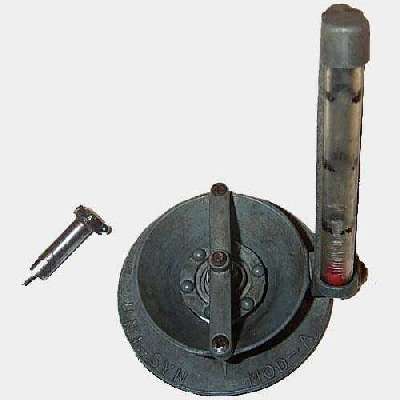
Chicagoland MG Club

Back to Archives
Submit an article
Cover
Intro & Club Officers
The Steering Column
Welcome New Members
May Meeting Rept
MG X Power Launched
MG EX 257 LeMans Car
Ltd. Edition MGB Model
Deep Blue Fender Cover
Go Brit Baby Tech Ses
The Rally Corner
Spring Chicken Rally
MGA Differential Swap
Lands End Rally
Family Go-Kart Night
Funkhana/Autocross
Regalia Items Available
Regalia Order Form
MG 2001 -MG Odyssey
MG 2001 Registration
Just a Simple Wrench
British Car Union
Mid-Summer Rally
Road America Camping
Abingdon Trials Rally
Abingdon Summer Party
Lake Trip 2000
MG-Rover Agreement
Cruise Nights
Classifieds
CMGC Events
Back Cover
|
|

Just a Simple Wrench
by Ann & Jake Snyder
 Tune Up Party Tools
Tune Up Party Tools
Our assignment at the tune up party was to help set up some carburetters. Our first question was. "What kind of MG do you have?", and we were relieved to find the car had a pair of SU HIFs, that had recently been rebuilt. We are more familiar with this model than with the older SU HS units, and we have never demonstrated much eagerness to learn anything about Zenith-Stromberg units, in spite of having bought a true derelict of that type for five dollars with the intent of understanding how it was supposed to work. (This particular Stromberg was apparently one of the better ones, because it did not have the dents and cracks in the castings that frequently result from being repeatedly bounced off a concrete garage floor). SU HIF carburetters were fitted to 1972 through 1974 1/2 MGBs, and are useable as replacements for the later Zenith-Stromberg units if other modifications are also made.
Two important portions of the tune up had already been done by the owner- those of setting the valve lash and going over the ignition system. The only problem the owner mentioned with the MG was that there was a flat spot in the acceleration at middle engine revs.
We went over the carburetter sequence that we follow with the owner and others who had gathered around. There are a few preliminaries - we made certain there was oil in the carburetter dampers (the same as used in the engine) and that the needles were positioned in the pistons at the same depth in both carburetters. If the needles are not positioned the same (check the book), the carburetters cannot be synchronized. The richness (jet) adjustment was good enough to run the MG, but if we had started from scratch we would have followed the book instructions and turned the jets down two full turns from the "flush with the bridge" position. Then we adjusted the carburetters separately and independently, which means the linkage between the two was loosened. We followed three steps to synchronize the carburetters (also check Bentley, page 435):
1. Set the engine revs - The engine should be running at approximately 1500 rpm, (just a place to start).
2. Equalize the air flow between the carburetters - Use a Uni-Syn or similar device. We found the owner's Uni-Syn to be defective. In order to get the air indicator to float, the center plate adjustment was so small that the Uni-Syn acted like a choke, changing the engine speed when it was held tight to the carburetter. The engine speed should not change when the Uni-Syn is pressed to the carburetter opening. We borrowed another instrument, which worked well.
3. Set the mixture - This is where the little pins that push the pistons up do what they were put on the carburetter for. Push the little pin and raise the piston about thirty thousandths of an inch. If the engine speeds up and stays up, the mixture is too rich. If the engine stalls, the mixture is too lean. The goal is to get the mixture just right, when the engine speed will increase, then drop back to where it was. (We found it necessary to go over 1, 2 and 3 several times to get the setting close, and final adjustments were necessary after the air cleaners were refitted.) "Lean is anti-clockwise", reads the label on the bonnet support. Making the adjustment is much easier with a home-made tool that we first saw used while working on one of the early club project cars. It is made from a 5/16 bolt and an old hacksaw blade, welded and ground off (JB Weld would work here, as well). Put a gob of steel (real or plastic) on the bolt head so you can tell how much you are tuning the screw.
After doing 1, 2, 3 as much as we thought necessary, we tightened the linkage, leaving a small space (twelve thousandths of an inch is the book value) between the stop on the throttle rod and the choke rod. This gives a little dead space when the accelerator pad is pressed down, and helps make certain that the idle returns to the set point. Finally, the owner set the engine idle where he wanted it, and drove off for a happy season of MG motoring.

Tune-Up Party Tools. The carburetter adjuster was made from a bolt and old hacksaw blade. It is a screw driver that exactly fits in the recess for the mixture adjustment screw, and will not fall out while you are working. The Uni-Syn was purchased for $2 at a flea market. They both work well.
 
|
|


 Tune Up Party Tools
Tune Up Party Tools 
